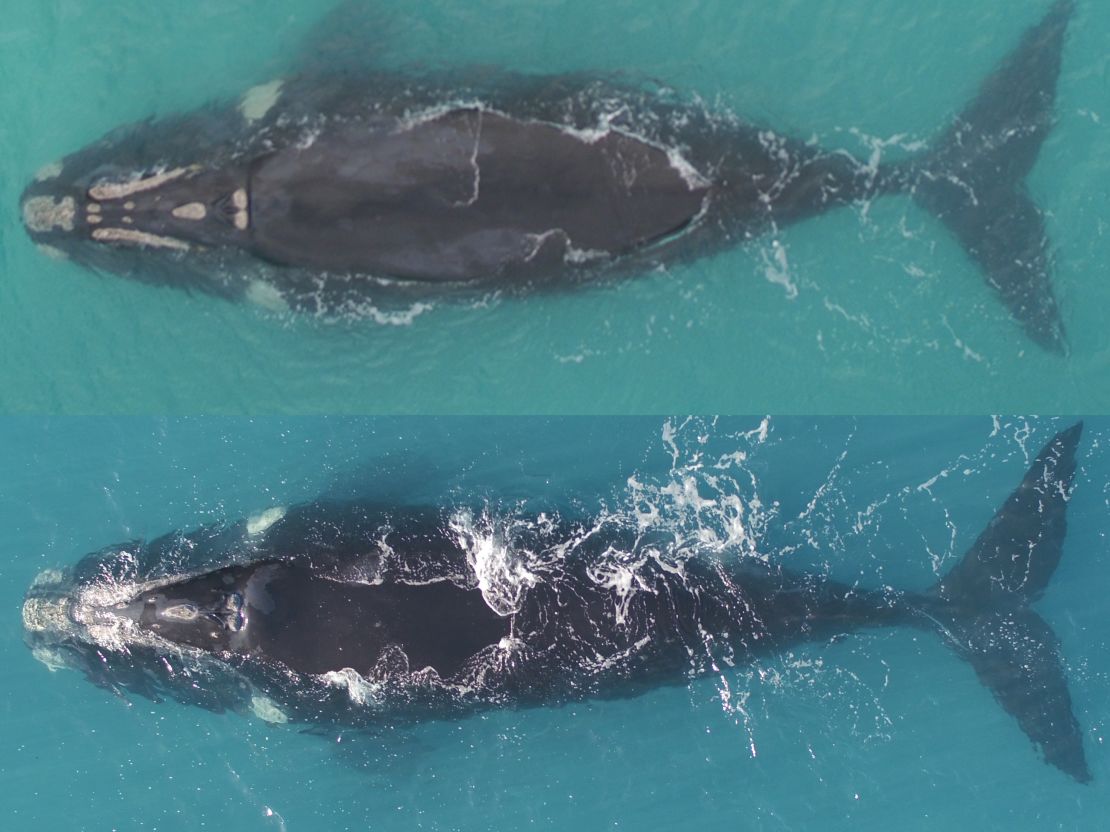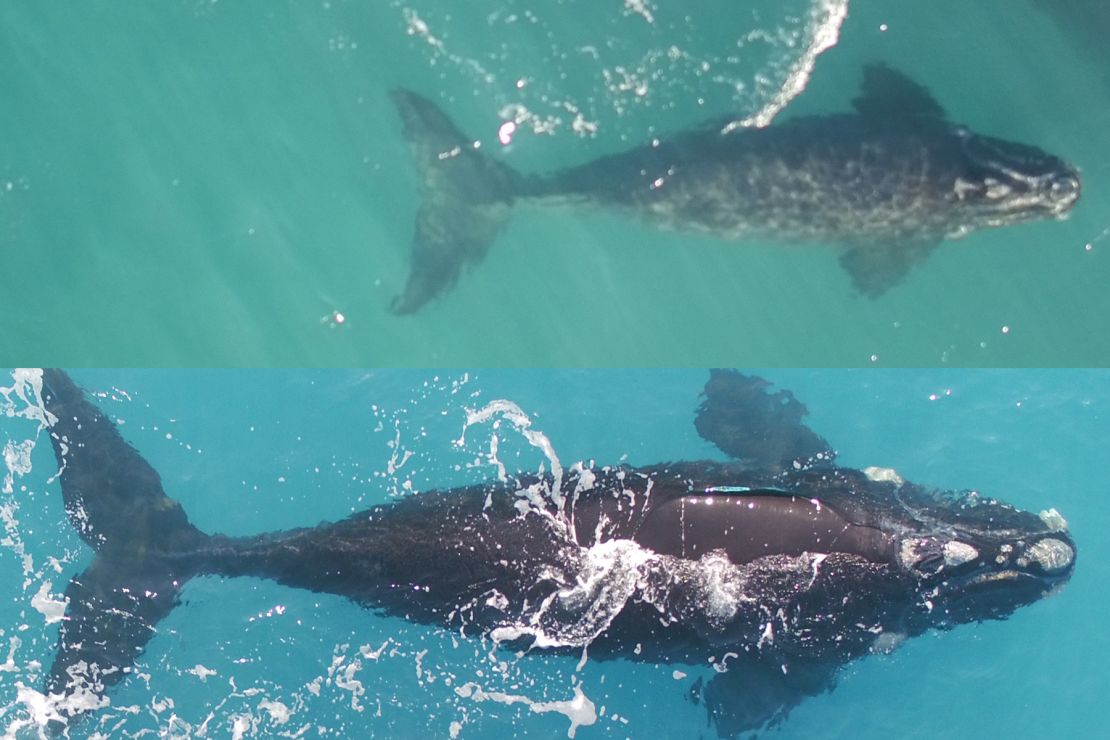Story highlights
It's estimated 3,500 southern right whales exist
Very little was known about their feeding habits and calving areas, until now.
After nearly being hunted to extinction, southern right whales in Australia are making a comeback – with the help of drones.
Researchers from Australia’s Murdoch University have teamed up with the World Wide Fund Australia and are using drones for the first time to check on the health of the endangered species.
They’re monitoring southern right whales in the Great Australian Bight and have revealed that females lose an extraordinary amount of weight while fattening up their calves, before journeying back to Antarctica.
The whales travel thousands of miles to the area off South Australia’s coast to give birth. Researchers have found that, once the calves are born, mothers do not eat and rely solely on their fat stores.

WWF-Australia whale researcher Chris Johnson said their significant weight loss made them “especially vulnerable to emerging threats.”
Global ocean warming – which can reduce their food supply, tangling in marine debris, increased ship traffic and oil and gas exploration all threaten the endangered species.
“Nurturing a calf is already tough enough for the mothers without humans adding to the pressure,” Johnson said.
That’s why, he said, the research project involving drones is so important. “If the condition of the whales changes in the future, it could be a sign that human activities are having an impact.”
One drone picture revealed that a southern right whale mother, named Scooter, lost 17 inches in body width in as little as two months while looking after her calf. Other mothers became so skinny, even their spinal cords began to show.

Lead researcher Fredrik Christiansen from Murdoch University said whale mothers could only give birth every three to four years because of the toll on their bodies.
“When they arrive, they have significant fat reserves; they are wide all along their body. When they leave, they look like giant tadpoles. They have a head which is still big and robust, but the rest of the body is skinny, and you can even see the spinal cord showing up,”
Professor Lars Bejder, also from Murdoch University, told CNN that little was known about mother-calf relationships, so the study helped researchers understand the general consequences of reproduction for these mammals.
He said as female whales only return every three to four years, it was crucial for the research to carry on: “It’s important we do it for another 2-3 years to get a full sense of all the moms which will give us a really good indication (of the impacts of breeding).”
Bejder said it’s also important for the team to start looking at Antarctica, where southern right whales migrate to after breeding, to understand their feeding habits.
Spokesman, Mark Symons, for WWF-Australia said it was the “first time scientists have been able to study whales in this way.”
He said WWF-Australia sponsored the research and that drones were able to “unlock some of their mysteries.”

Whaling in the 19th century almost wiped out the entire species in Australian waters, leaving less than 300 remaining. Fortunately the particular species are no longer hunted and researchers now estimate numbers have increased to 3,500. But still, they said, there’s much to learn.
“Southern right whales are recovering but nowhere near to the same extent as humpback whales. And we don’t really know why, and that’s one of the big questions we’re hoping to answer,” Bejder said.
“(They’re) magnificent animals and a symbol of ocean health so it’s really important that these animals are conserved in their natural environment.”















